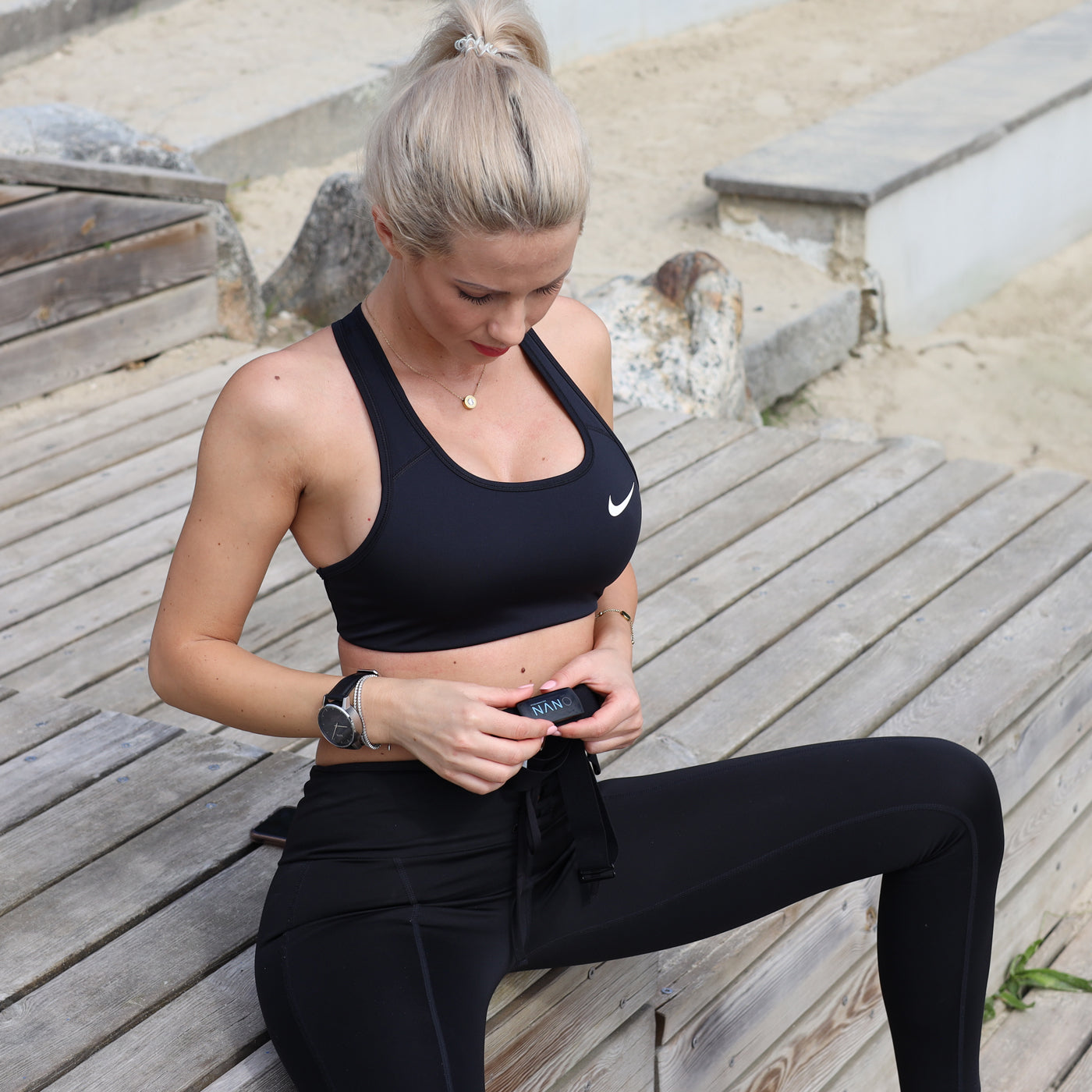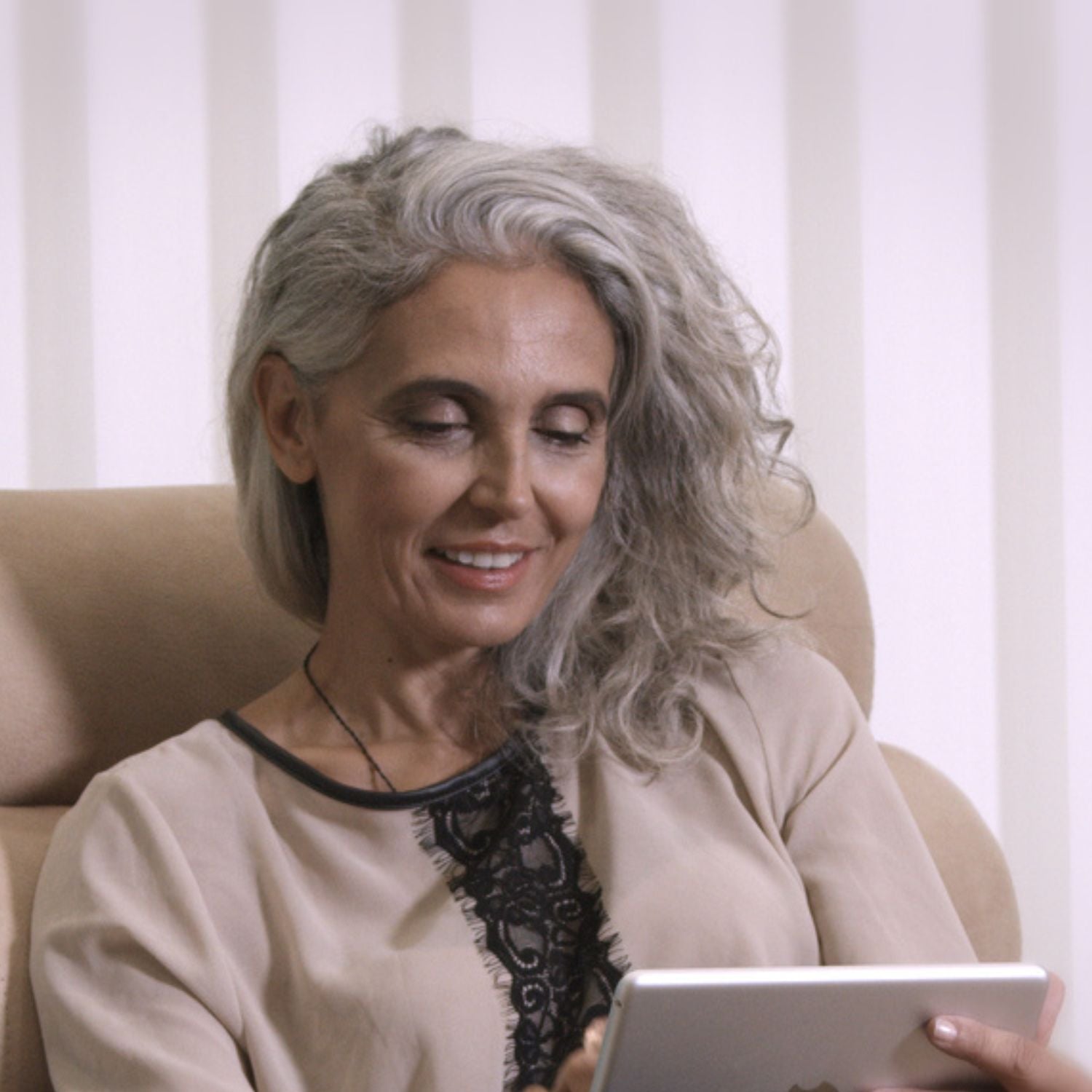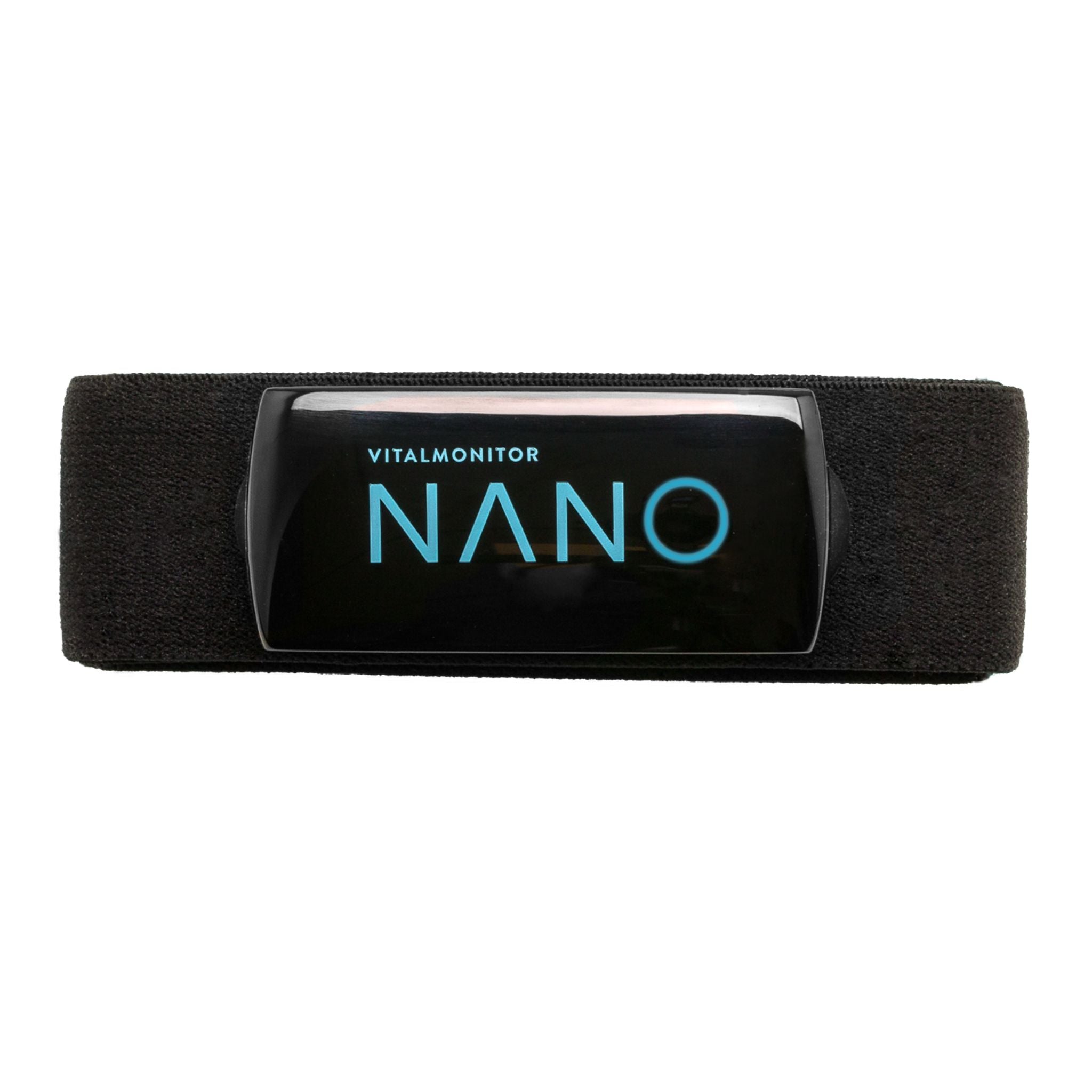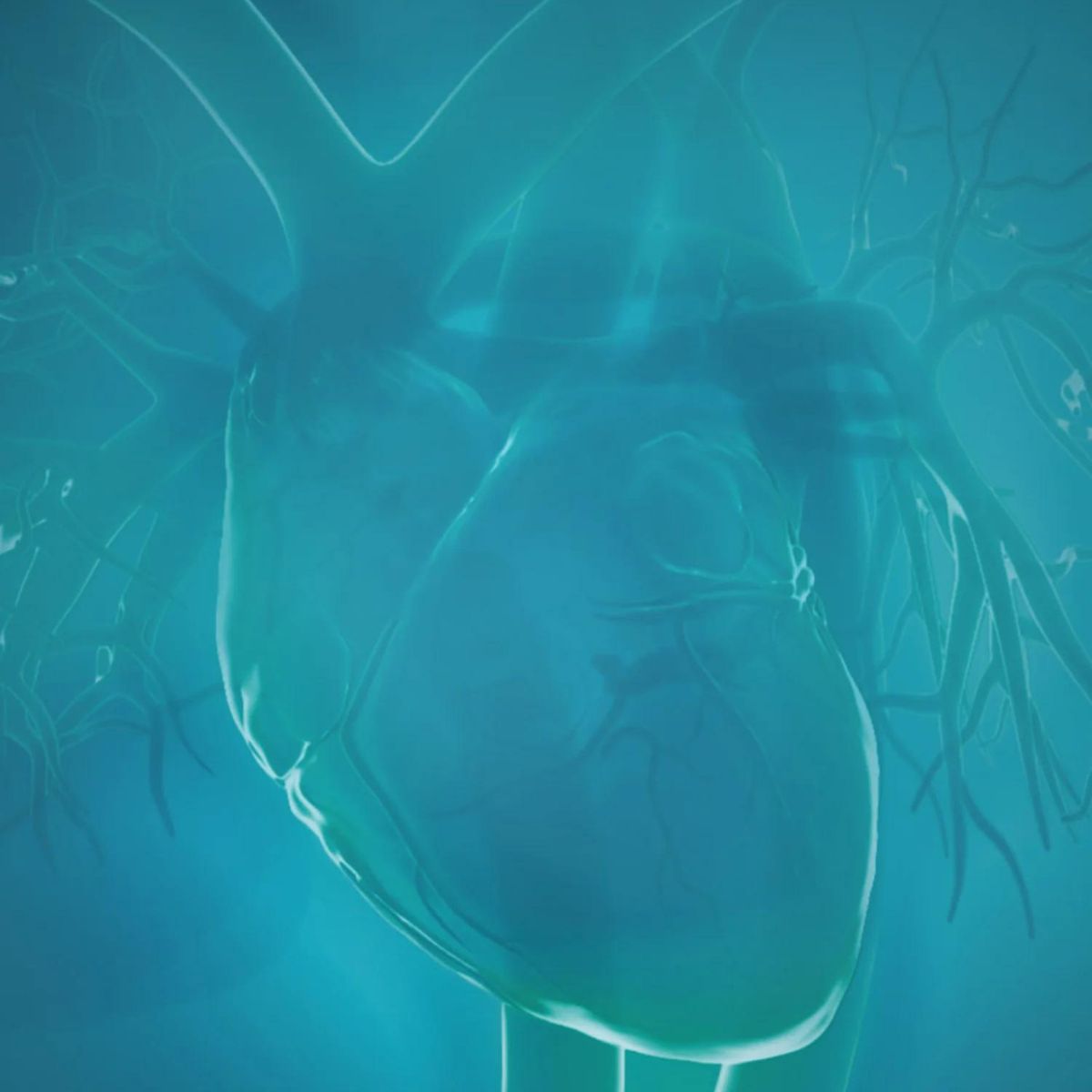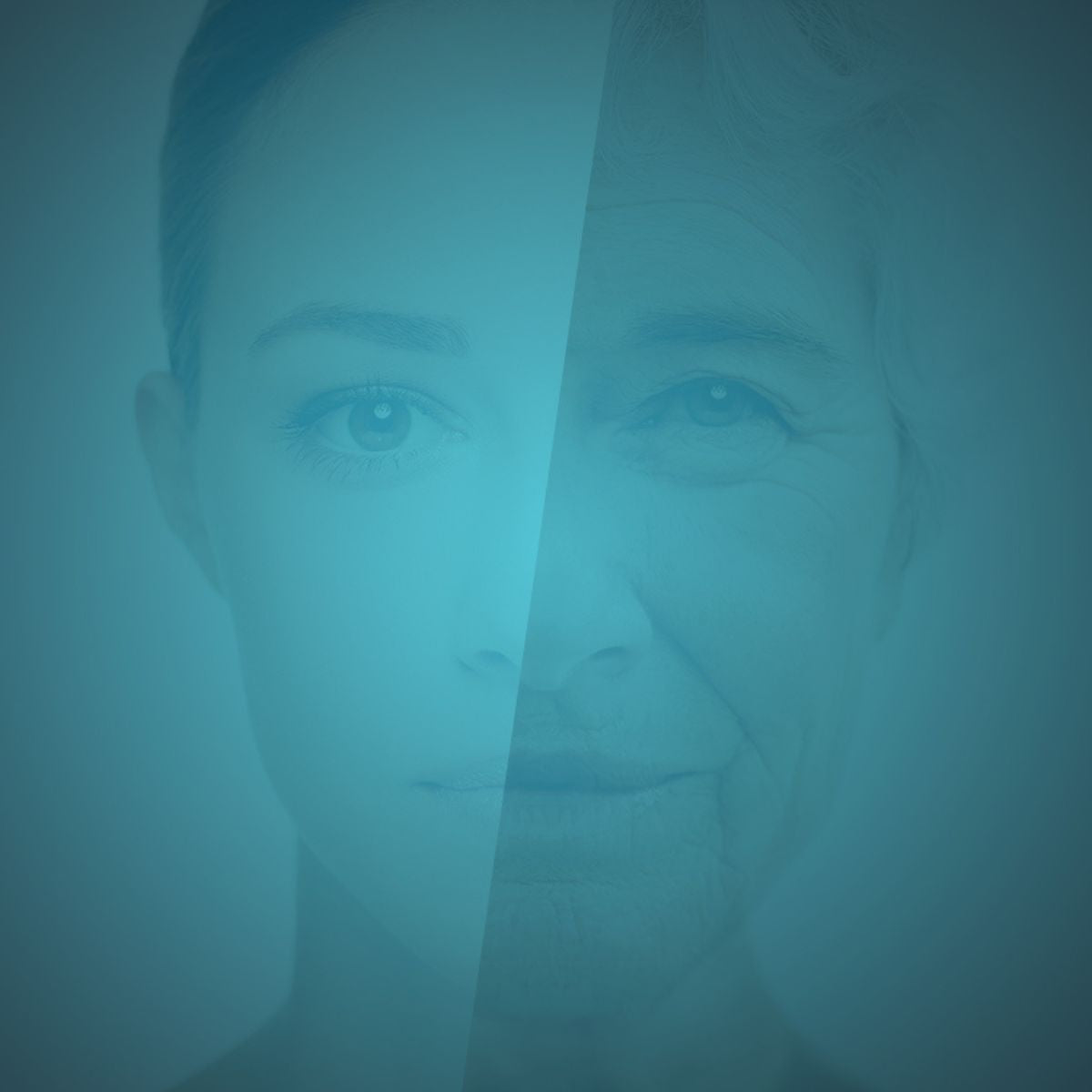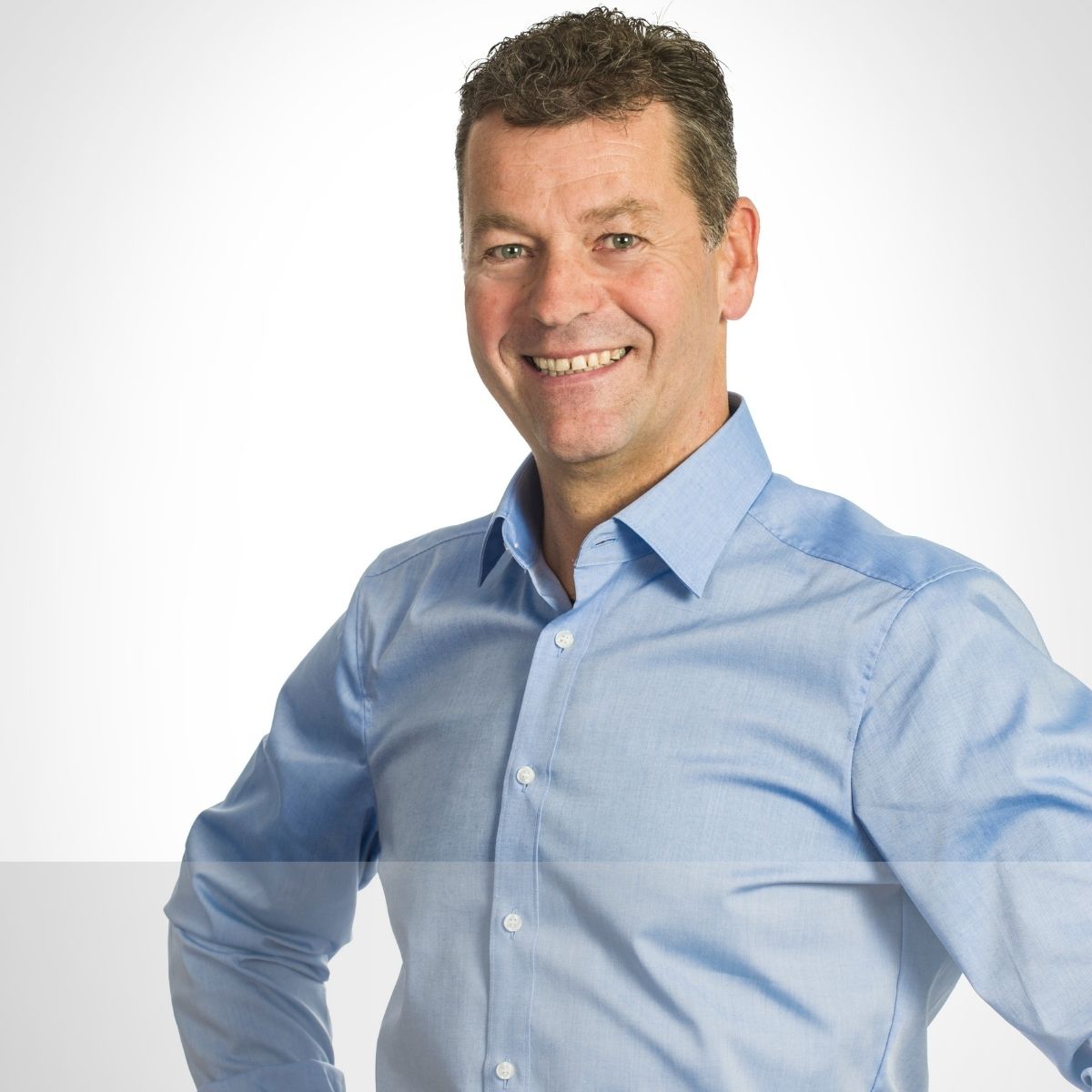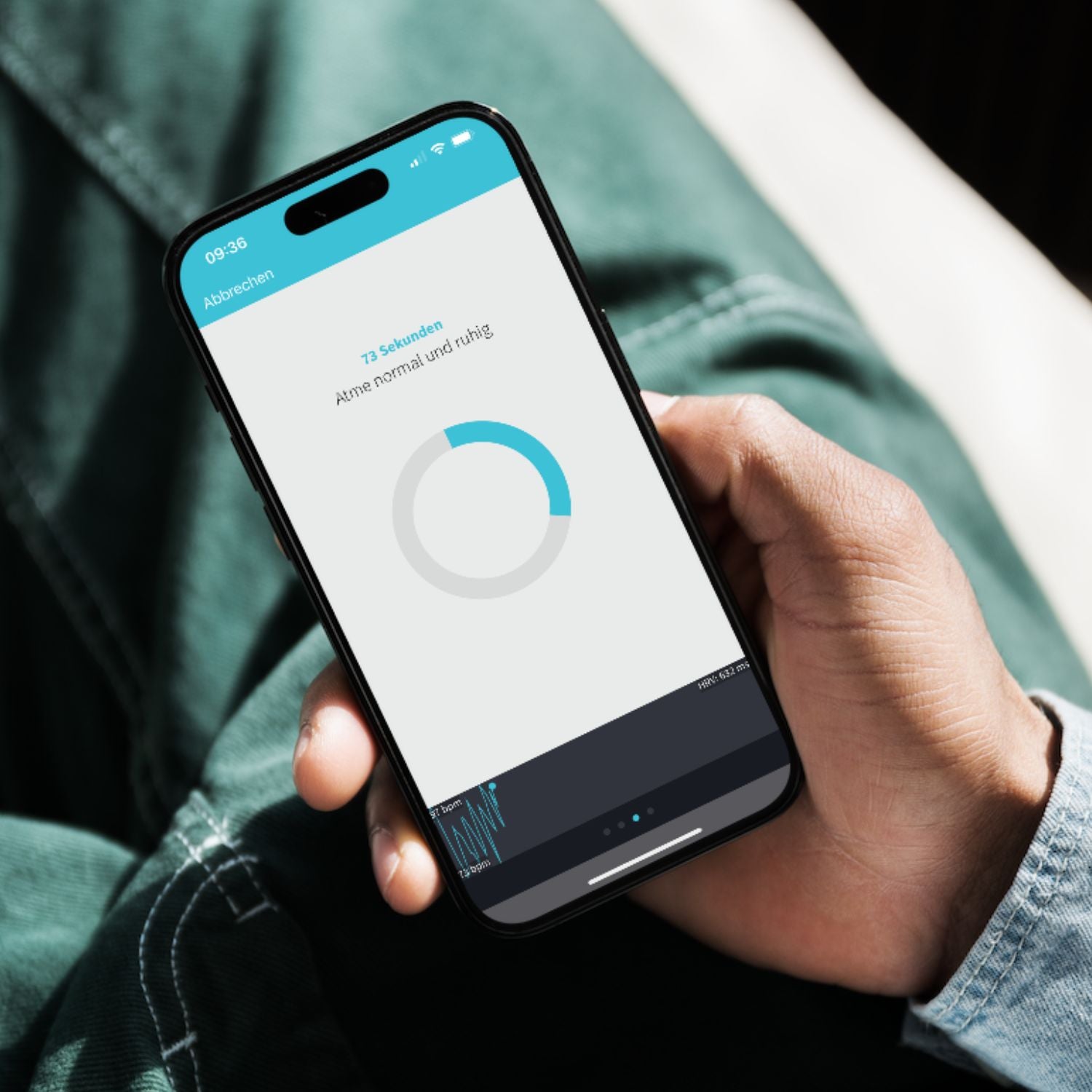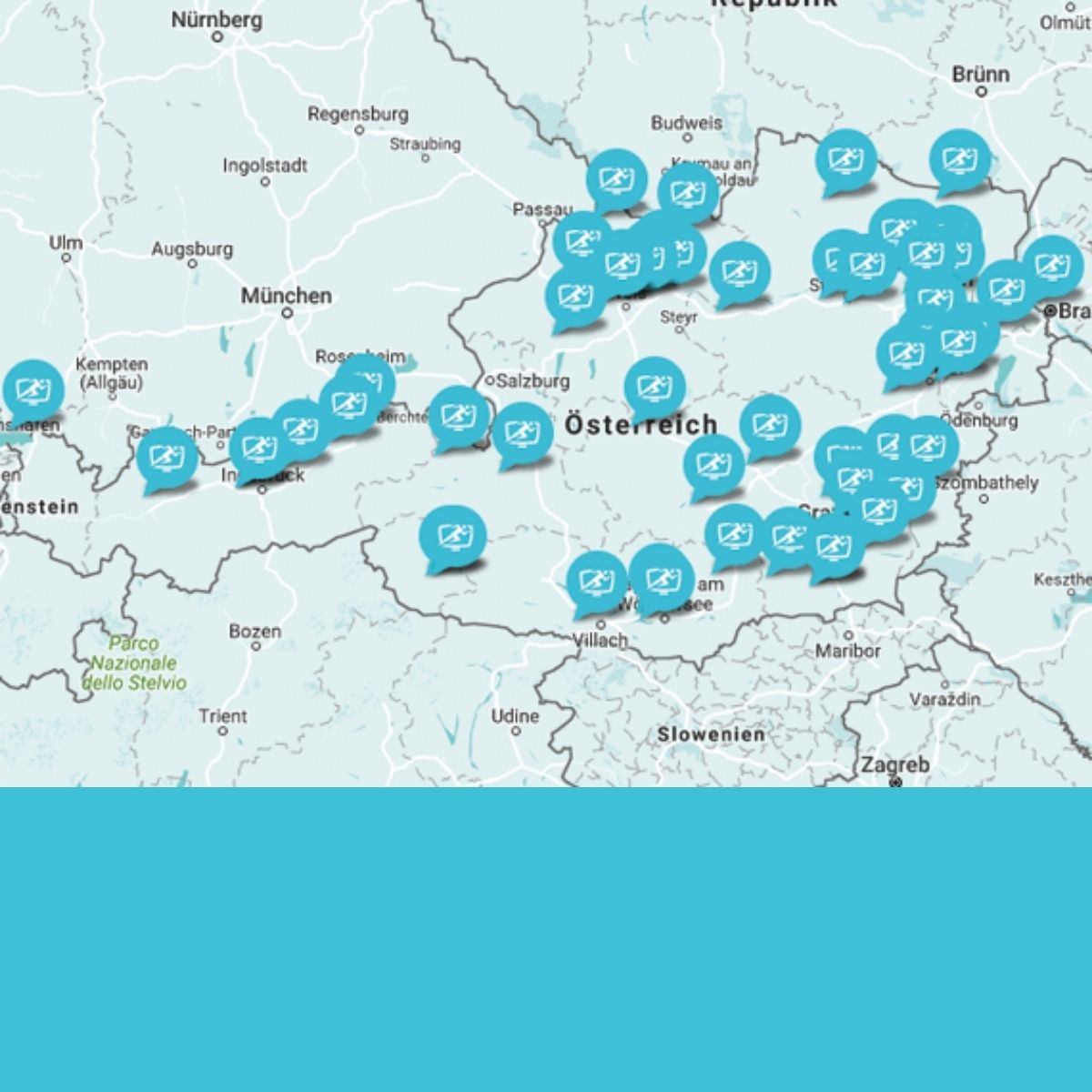Every beginning is simple
Start with the Vitalmonitor Nano
We would like to congratulate you on purchasing your Vitalmonitor Nano! You have taken the first step towards a higher level of performance or improved health. On the next few pages we would like to tell you everything that will help you use your Vitalmonitor.
What do I have to pay attention to when putting on the nano?
The contacts of the Vitalmonitor Nano must be moistened. It turns on automatically as soon as it detects your heartbeat.
How do I get a clean measurement?
It is best to sit quietly in the measuring position a minute before the measurement begins and relax. During the measurement you will see a line at the bottom of the app. With a clean measurement, it always moves around an imaginary center line and shows no trend up or down. The best way to achieve this is to sit down quietly with your back leaning. Choose a place where no one will bother you and try not to sneeze, cough, yawn, move, or think about things that upset you.
When is the best time for a morning measurement?
We have found that there are people for whom waking up with or without an alarm clock causes a brief moment of stress , or that the body needs a certain amount of time to get going. This affects many of our users. For these affected users, the results of the morning measurement 15 minutes after waking up were sometimes much more stable than immediately after waking up.
Which type am I?
First of all, you should have taken morning measurements on at least 7-10 days so that the system is reasonably calibrated. Of course, you can also carry out status measurements. You can then carry out a very simple self-test. Measure 3 days in a row 1x immediately after waking up and again about 15 minutes later. In the 15 minutes between the first measurement and the new measurement you can carry out your morning errands. Shower, go to the toilet, brush your teeth, make breakfast (don't eat it yet!), get dressed. Please only carry out activities that do not cause your heart rate to rise significantly (running to the bakery is not recommended).
Then sit on an armchair or on your bed (with a backrest) and take the second measurement. Please make sure that you stay in the measuring position for at least 1 minute before starting the measurement. If the two results are relatively the same , then the time of measurement doesn't really matter to you. If the two measurement results differ significantly from each other, you are one of those users for whom the measurement time is not important. If possible, we recommend that you choose the measurement time 15 minutes after waking up (e.g. shortly before breakfast). Please carry out the test on at least 3 consecutive days to determine significance.
What is the purpose of status measurement?
A status measurement makes sense:
- If the morning measurement before training is not too good (additional regeneration should be recorded).
- Before training: if you have not eaten/drunk coffee in the last 2 hours beforehand or if you have done physically strenuous work.
- After training to measure the training load: 15-60 minutes afterwards - important: always allow the same amount of time to pass so that values are comparable.
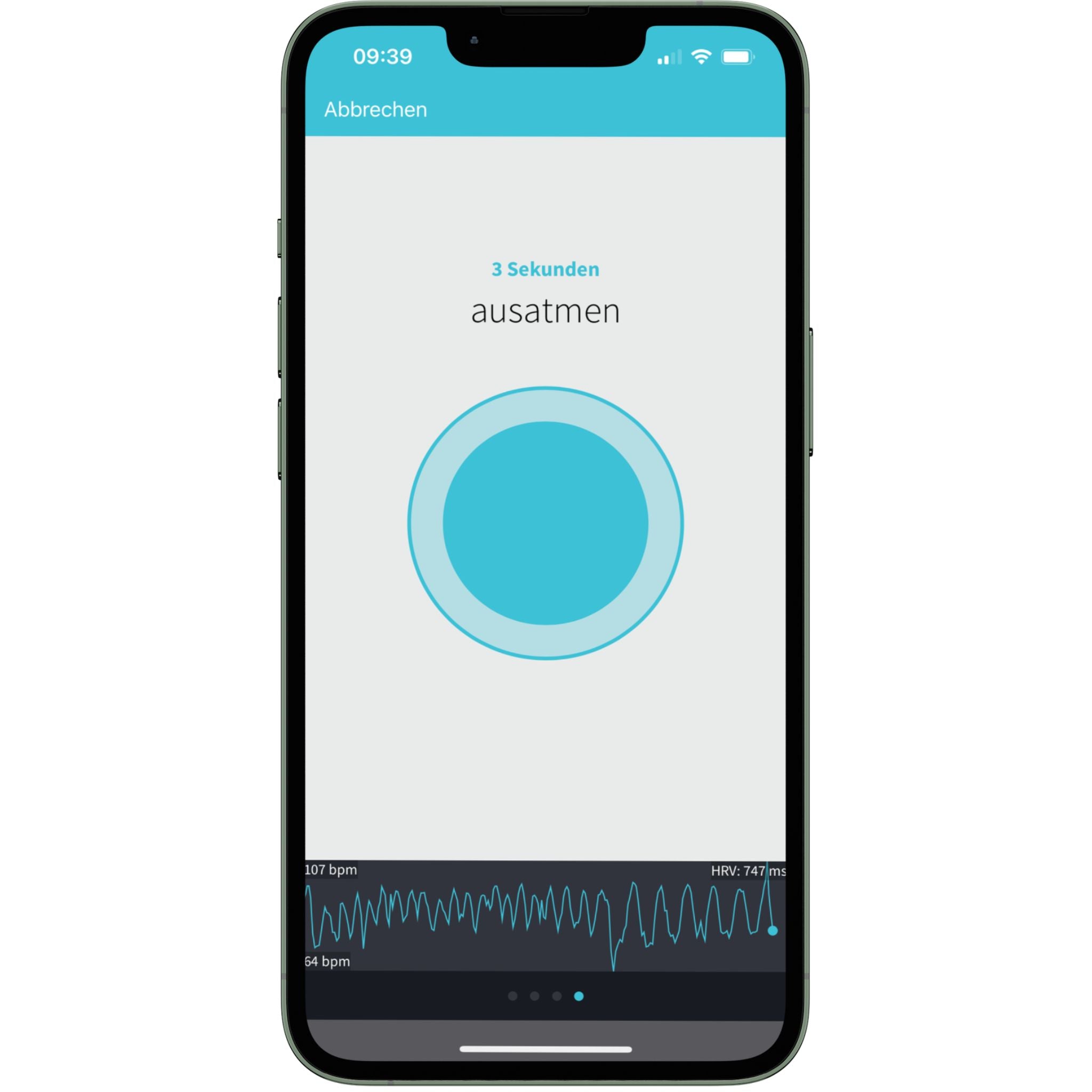
What does the course of the measurement say?
The history shows your heart rate during the measurement. The first part of the measurement is the rest measurement and should move relatively stable around an average value (imaginary average line parallel to the x-axis). In the second part of the breathing measurement, the 6 deep breaths should be visible.
To ensure that your values are meaningful, it is important to carry out clean measurements and delete unclean measurements. A clean measurement looks like the example below.
What is regeneration?
The regeneration of your body depends on stress and recovery . Over the course of a lifetime, all sorts of stressful situations arise: work, stress, training, lack of sleep, poor nutrition, etc. To ensure that these stresses do not deplete your body, you must take timely regenerative measures such as: enough sleep, rest days, stress-reducing exercises, healthy diet , vacation etc. can be compensated. We measure these recoveries and stresses with regeneration. After each measurement, the Vitalmonitor uses the individual calibration to say: Are you stressed or have you recovered ?
stress
The stress is calculated on the one hand from your HRV and on the other hand from the breathing part of the respective measurement. The higher your HRV, the more productive and less stressed your body is. During the breathing exercise, a recovered organism reacts within a few milliseconds. This means that the heartbeat immediately adapts to the breathing target. The longer it takes, the more stressed your organism is!
Calibration
Here you will find a few important facts about calibrating the Vitalmonitor:
- Our Vitalmonitor adapts to the user's organism with each measurement.
- This means that regeneration and stress are calculated individually for each measurement.
- If you want to compare your values with someone else, you can do this using BioAge and HRV Index.
- The basic calibration (limited information regarding stress and regeneration) requires 8 morning measurements. Previous values are only of limited significance because not enough data has been collected to make clear statements.
- The calibration improves with each morning measurement.
- In total, the last 60 morning measurements are always used for calibration (seasonal fluctuations).
How does BioAge come about?
The older a person gets, the lower their heart rate variability becomes.
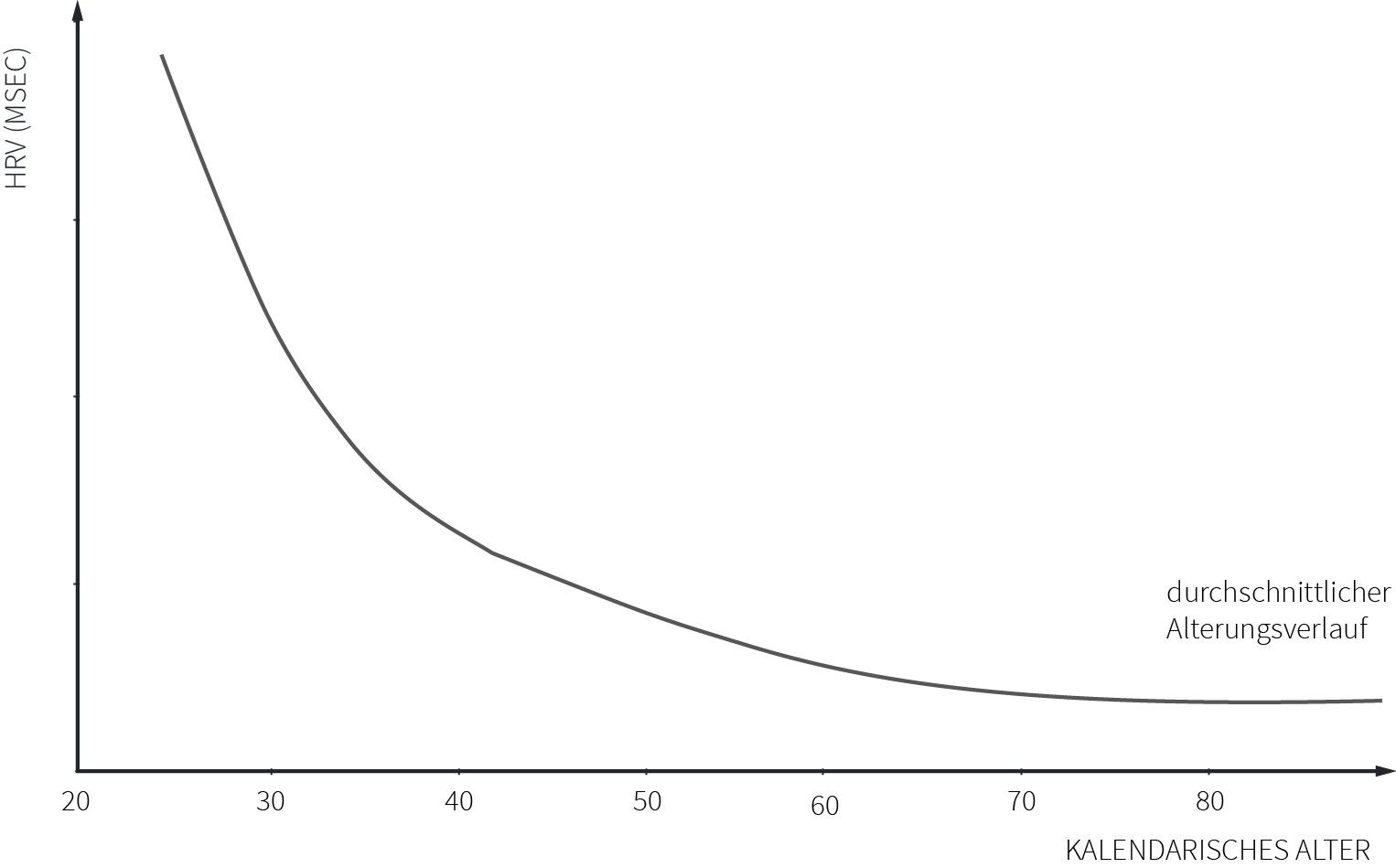
But it's not just your age that determines your heart rate variability. How you treat your body is also crucial. Nicotine, alcohol, poor nutrition, little exercise, a lot of stress – all of this has a negative effect on your heart rate variability and lowers your BioAge.
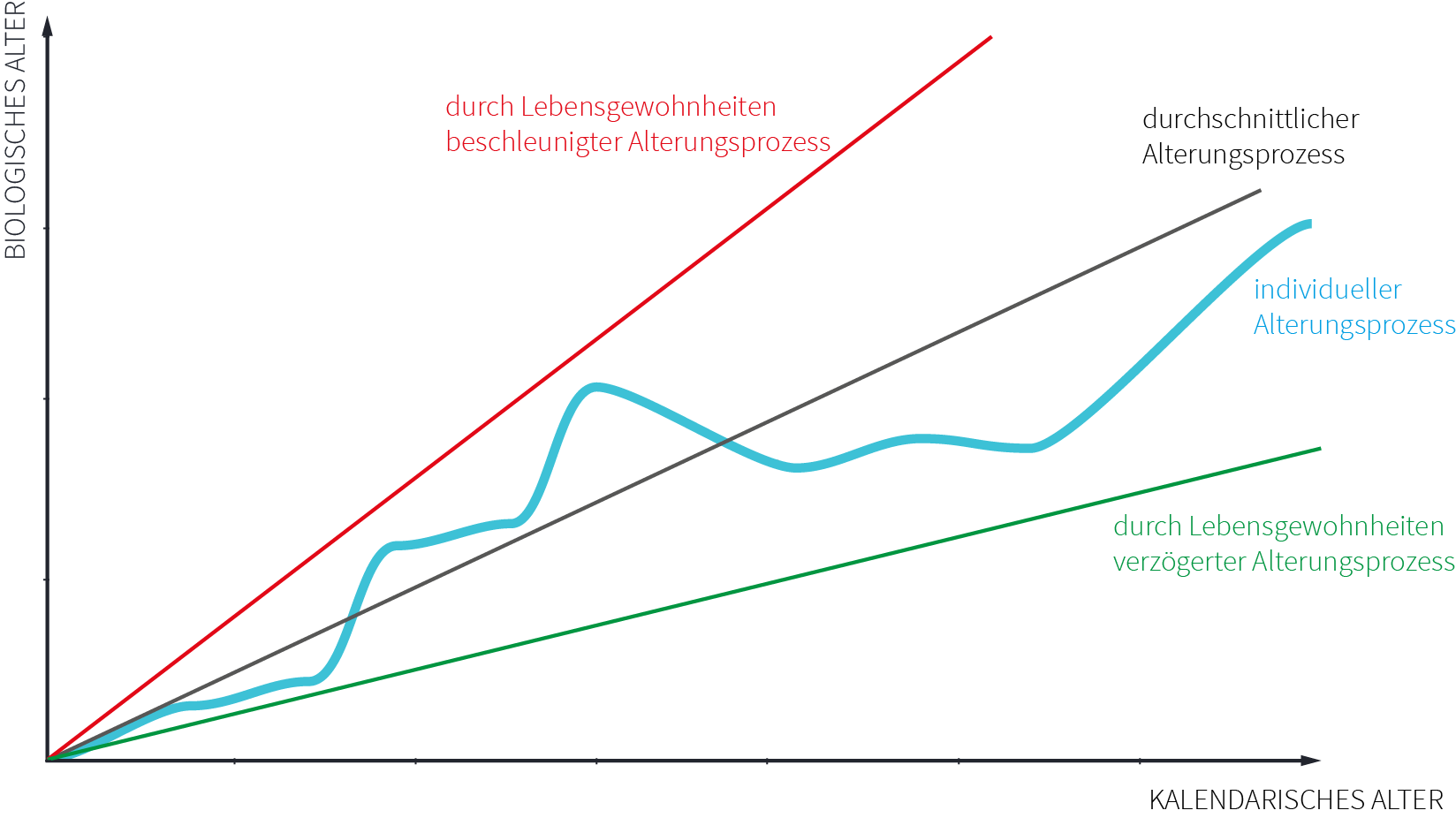
BioAge statements
By measuring your biological age, you can find out what is good for your body and strengthen exactly that. Or you see what has a negative impact and avoid it in the future. Through these adjustments you can age healthily and increase your life expectancy, or regain the performance of a younger person.
Here you can see how different living conditions can affect the BioAge:

BioAge examples
Diet change
Our customer was able to continuously reduce his high BioAge by changing his diet.

New dog
Our customer got a young dog. The first few nights were hard because he whined almost constantly. After the dog got used to it after a few days, the BioAge decreased significantly thanks to the walks with the dog.

Start with exercise
Our marketing manager himself watched his BioAge move around 60 years for months. At some point he couldn't stand it anymore and has been cycling to work every day since then - much to the delight of his body (click here for the full story ).

Training change
Our customer is a busy manager and very ambitious in terms of sport. After a long day at work, he goes straight to the gym where he trains intensively. And that 4 times a week. Since this isn't particularly good for his BioAge, he decides to change his training - to light to moderate endurance training. His body couldn't process the intense training stimuli, which is why his BioAge went so high. After the training change, the BioAge reacted immediately and continuously moved downwards.

Change of sleeping place
For about 2 years, our customer had had the problem that his immune system would be affected if he trained too much. He had also been struggling with sleep problems for a long time. He didn't really feel rested in the morning and usually woke up exhausted. Previous bed changes did not bring any subjective improvement. Not this time either. However, his measurements, especially the BioAge, became significantly better. "Without a Vitalmonitor, I would have moved back to my sleeping place prematurely and would still be suffering from my old problems today!" he says today.

